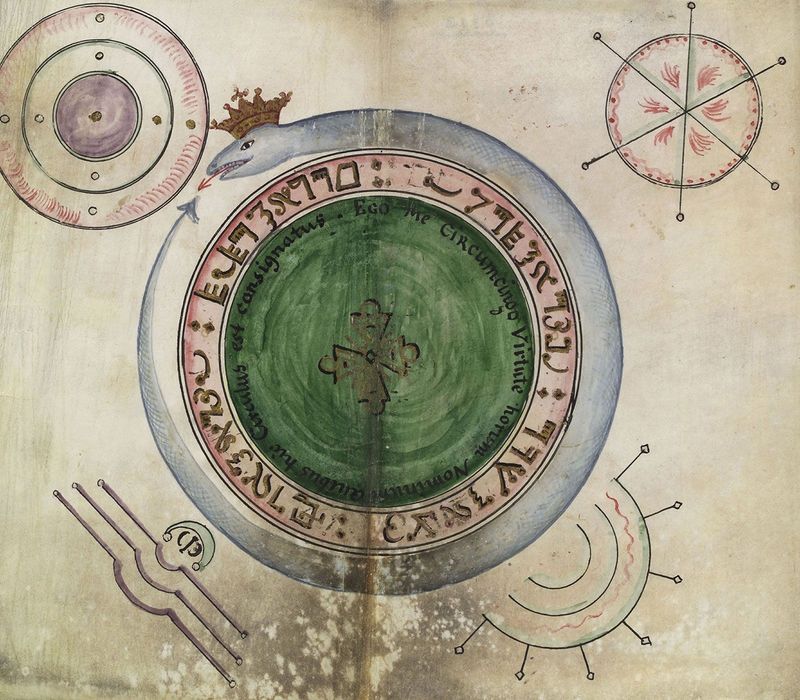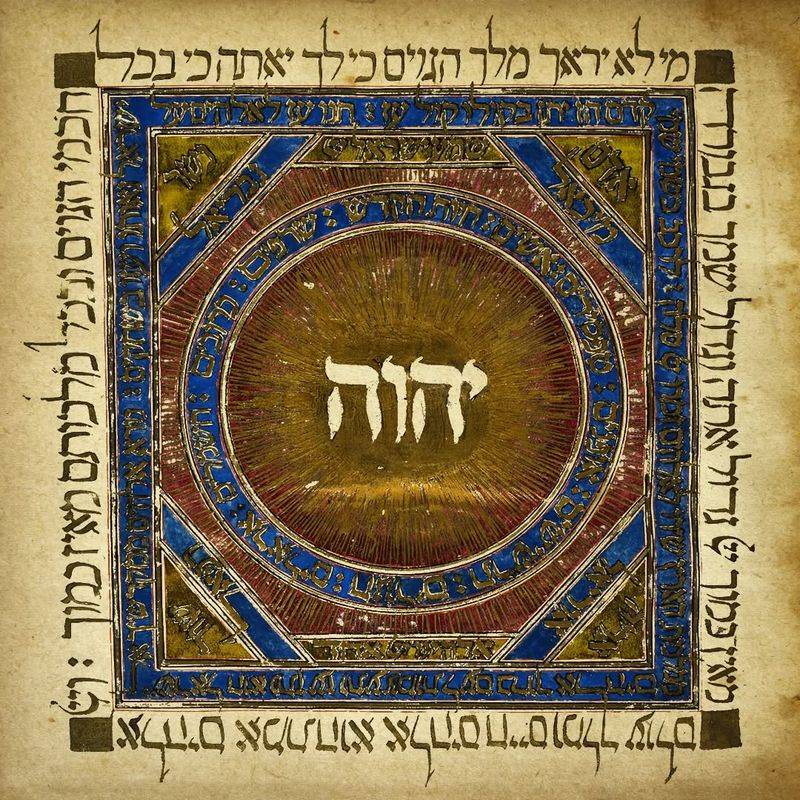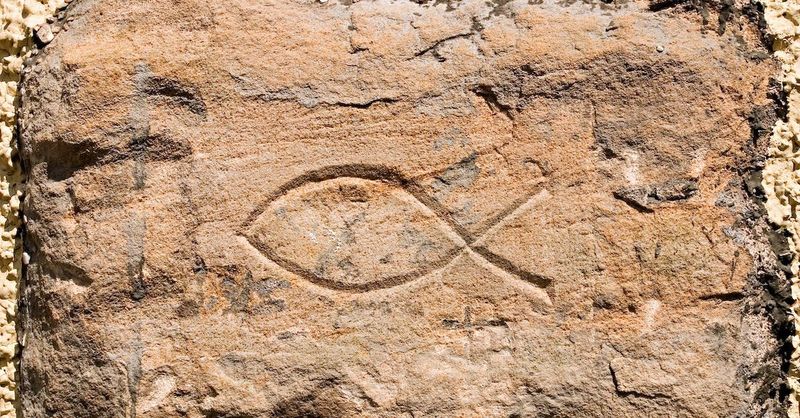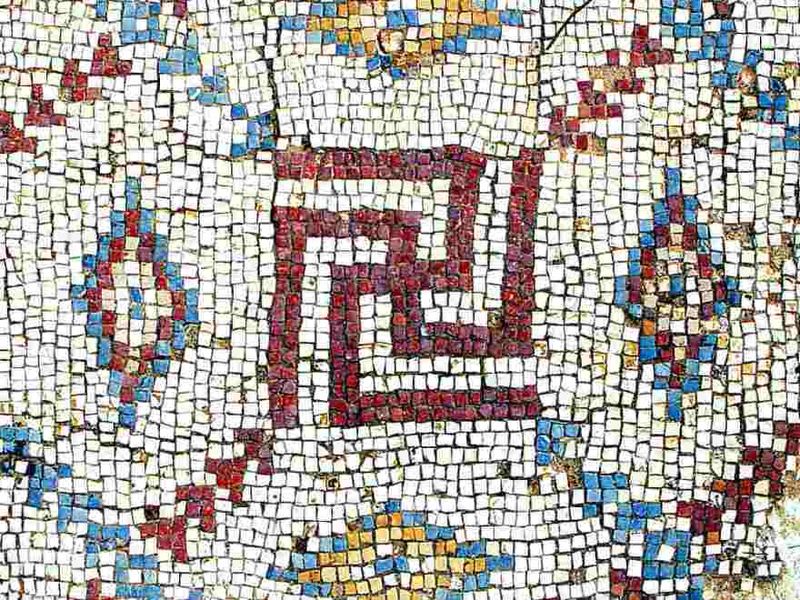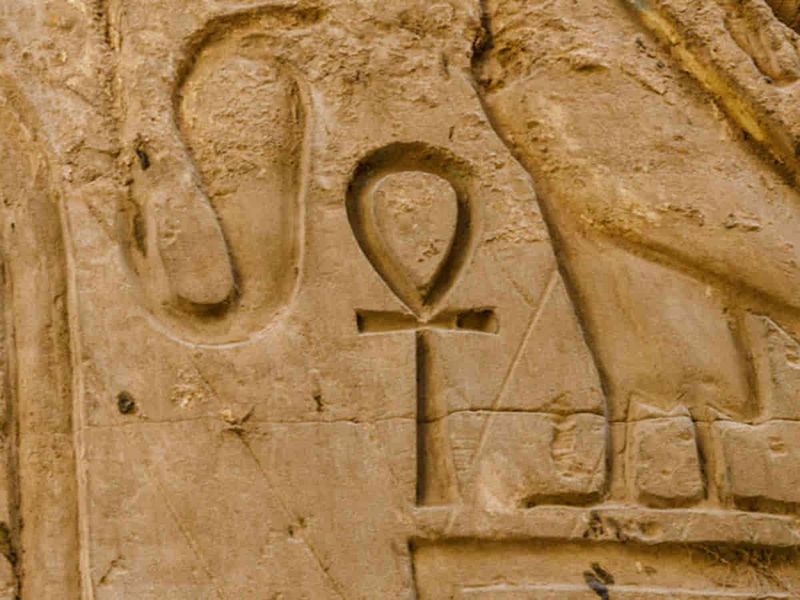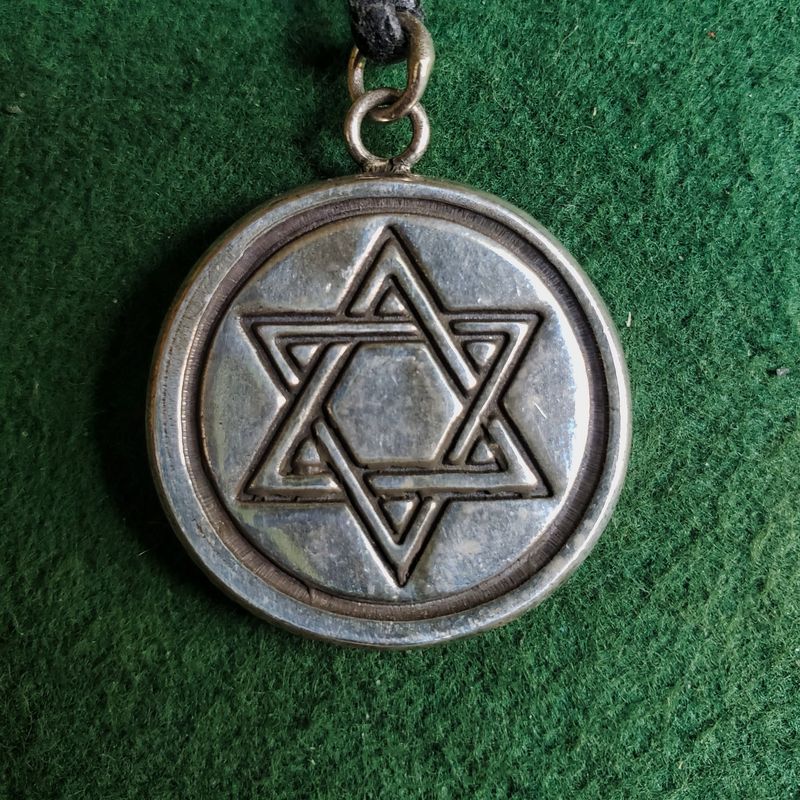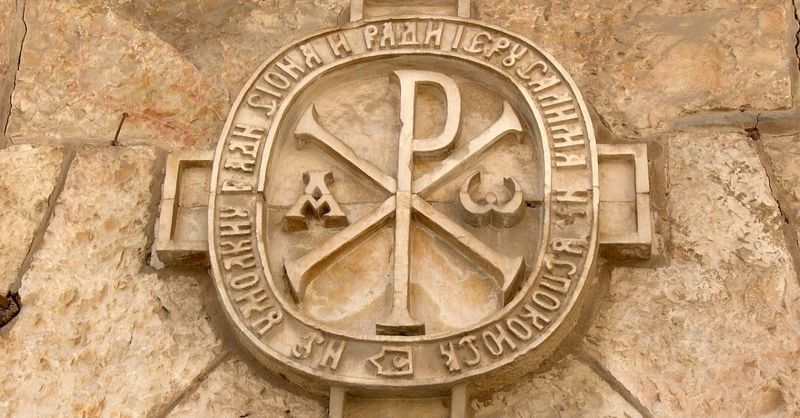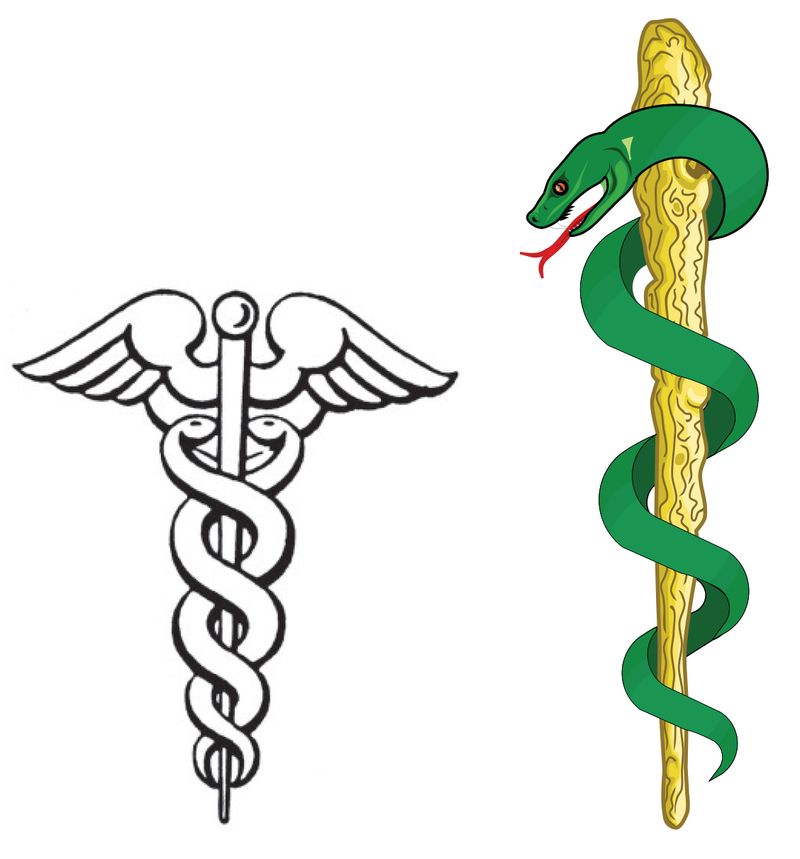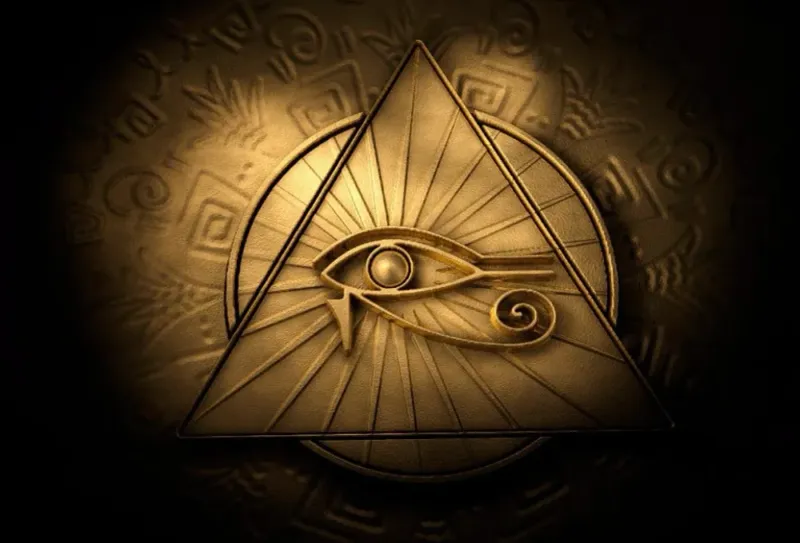Religious symbols often carry deep spiritual meanings—but some are cloaked in mystery. Despite centuries of study, certain icons continue to puzzle historians, theologians, and archaeologists alike. Whether lost in translation or deliberately obscure, these 10 symbols spark debate to this day.
1. The Ouroboros
The Ouroboros fascinates with its depiction of a serpent consuming its own tail. It’s found in Egyptian, Greek, and Gnostic texts. Is it about eternity, self-destruction, or unity?
Historians ponder its significance. The cyclical nature of life and death? Or does it represent a deeper spiritual truth?
Interpretations vary across cultures and ages. Some see it as a mystical symbol of wholeness. Its enduring presence in art and literature ensures debates continue. This symbol, full of contradictions, remains an enigma to scholars around the world.
2. The Tetragrammaton (YHWH)
YHWH, the Tetragrammaton, is sacred in Hebrew scriptures. Rarely spoken, it’s enveloped in mystical reverence. Its pronunciation and meaning remain speculative.
The name of God holds power in its brevity. Scholars debate its origins and pronunciation. Was it a divine name or a coded message?
Some traditions hold it as a key to divine understanding. Others see it as a unifying force. Its true essence is veiled, sparking theological discourse. This symbol’s mystery persists, intriguing scholars and believers for generations.
3. The Ichthys (Fish Symbol)
The Ichthys, known as the “Jesus fish,” carries layers of meaning. In times of Roman persecution, it was a secret Christian emblem.
Yet, it may stem from earlier pagan symbols. Was it a Christian code or a borrowed symbol?
The fish, an ancient motif, signifies abundance and salvation. Interpretations diverge, with some seeing a link to baptism. Its origin remains murky, encouraging ongoing debate. This symbol’s simple form belies its complex history, intriguing scholars and believers alike.
4. The Swastika
The Swastika’s history is multifaceted. Before its 20th-century misappropriation, it was sacred in Hinduism, Buddhism, and Jainism.
Was it a sign of cosmic order or solar divinity? Historians debate its ancient significance.
Its cross-cultural presence speaks to a shared human heritage. Variations exist, reflecting diverse beliefs. Its original meaning, now overshadowed, continues to be a subject of historical investigation. This symbol’s journey from sacred to stigmatized remains a poignant reminder of cultural transformation.
5. The Ankh
The Ankh, resembling a cross with a loop, is iconic in Egyptian culture. It’s commonly understood as representing eternal life.
But was it a tool, sandal strap, or spiritual key? Debates linger.
Its presence in tombs and art denotes a deeper meaning. Scholars ponder its purpose, be it practical or symbolic. This symbol’s allure endures, capturing the imagination of those fascinated by ancient Egypt. Its mystery and beauty make it a subject of endless exploration and debate.
6. The Seal of Solomon
The Seal of Solomon captivates with its storied past. Traditionally a six-pointed star, it’s linked to King Solomon’s magical powers.
Its ties to Islam, Judaism, and mysticism are profound. But determining its true origin is challenging.
Some view it as a symbol of wisdom and protection. Others see it as a talismanic emblem. This symbol’s layered meanings ensure it remains a topic of scholarly intrigue and spiritual significance. Its mystical allure has drawn interest across cultures and ages.
7. The Chi-Rho
The Chi-Rho, merging Greek letters chi (Χ) and rho (Ρ), is a monogram of Christ. It blends Roman military iconography with religious significance.
Was it a divine vision or Constantine’s political branding? Scholars differ.
Its use marked a turning point in Christian history. Some see it as a symbol of faith’s triumph. This emblem’s dual nature continues to intrigue, highlighting the intersection of religion and politics. Its presence in historical texts keeps the debate alive, captivating historians and theologians.
8. The Hand of Fatima (Hamsa)
The Hamsa, also known as the Hand of Fatima, is a protective emblem. Found in Islamic, Jewish, and Christian cultures, it’s said to ward off evil.
Is it a religious icon or folk amulet? Its roots are elusive.
Some see it as a symbol of protection and blessing. Its presence in various traditions underscores its universal appeal. Scholars continue to explore its origins and meanings, ensuring its enduring fascination. This symbol’s rich history makes it a key point of cultural and religious debate.
9. The Serpent on the Staff (Rod of Asclepius)
The Rod of Asclepius stands out with its serpent entwined around a staff. It’s often confused with the caduceus.
As a symbol of healing, its origins are debated. Why a snake? Interpretations range from biblical references to Greek mythology.
Some see it as a representation of medicine’s transformative power. Its presence in medical insignia highlights its lasting impact. The symbol’s rich mythology ensures it remains a favorite among historians and medical professionals. Its meanings, layered and diverse, continue to inspire curiosity and debate.
10. The Eye of Providence
Mystery surrounds the Eye of Providence. With an eye ensconced in a triangle, it’s been adopted by Freemasons and Christians. Was its origin political, religious, or esoteric? Scholars remain divided.
This symbol intrigues, representing divine omniscience. It’s seen in artistic depictions as watching over humanity. Some argue it signifies a watchful God, others a symbol of enlightenment.
Yet, its roots are debated. Was it meant for secret societies or broader religious purposes? Its enigmatic nature ensures ongoing scholarly debate. This icon remains a topic of fascination among historians and theologians alike.

